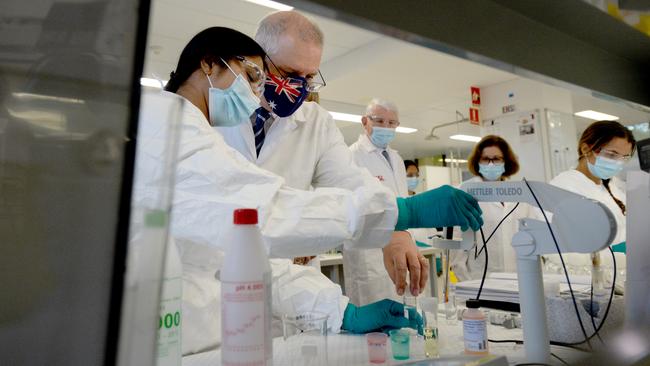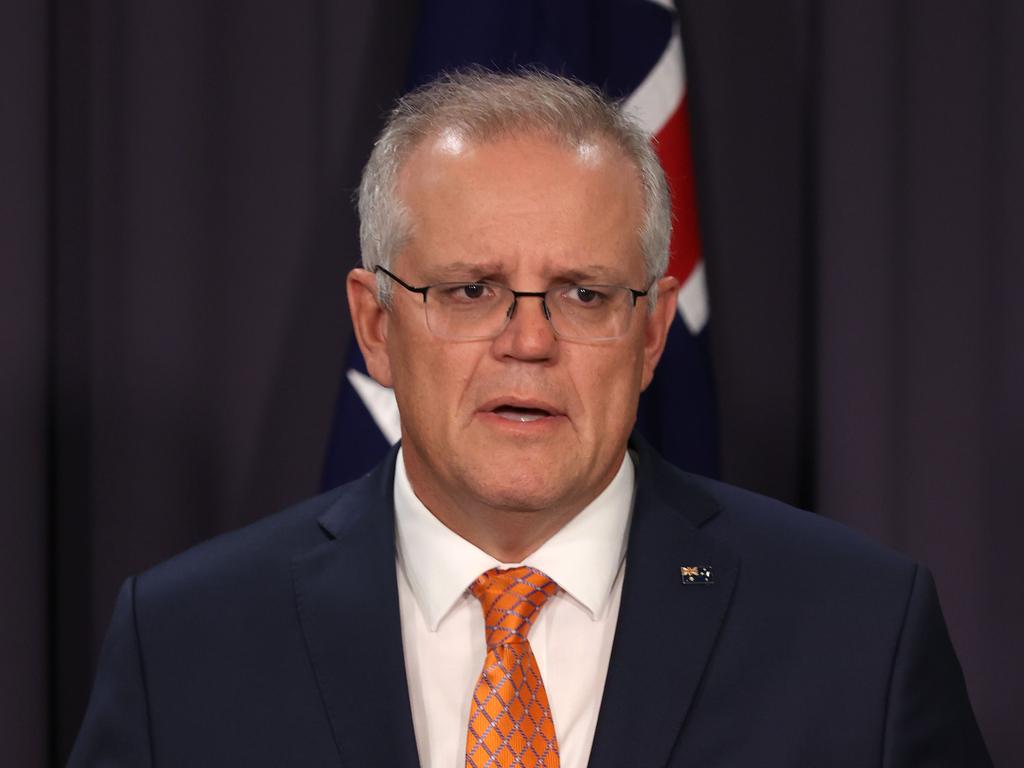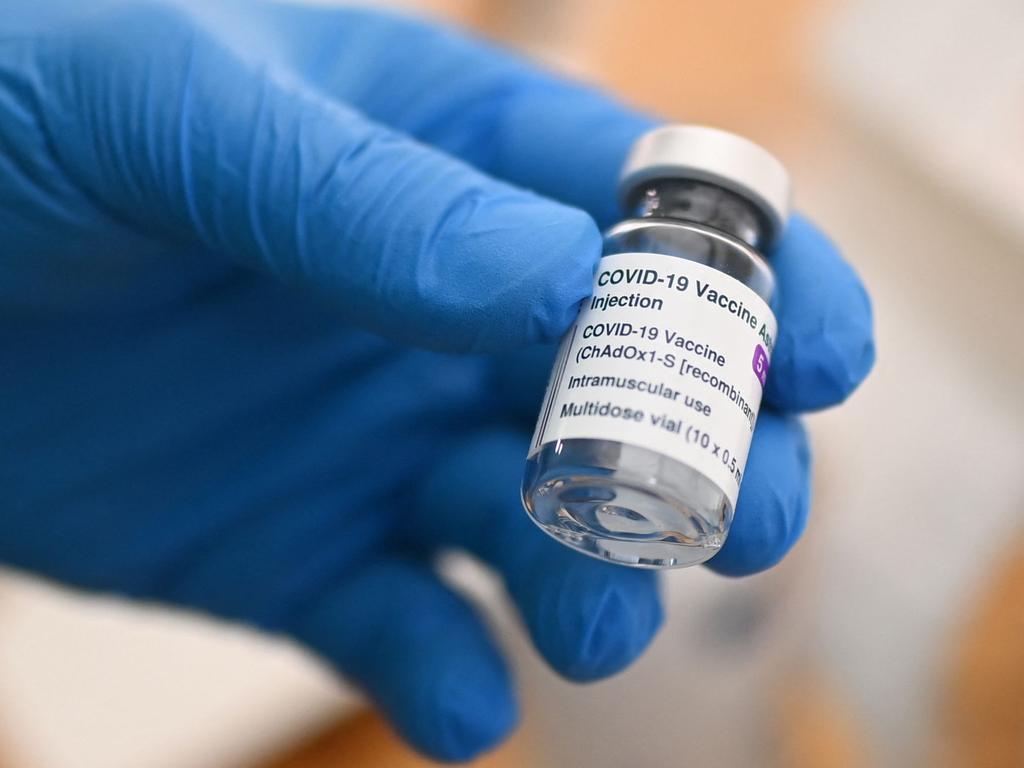Don’t hold your breath for a return to pre-Covid ‘normal’


Like everyone, I hope the vax wins. But the virus is a cunning little bugger, and while it’s in retreat in a lot of places, it’s on the offensive in others.
It hasn’t played all its cards yet by a long shot.
We are possibly still some years away from any true normal. The world has moved at lightning speed to develop vaccines. Notwithstanding the snafus, it’s a triumph of co-operative, global scientific effort.
The Morrison government is suffering, I think, exaggerated criticism over relatively minor issues in the vaccine rollout.
We should be absolutely clear-eyed about this. Our response has not been perfect. No nation’s response has been perfect. Our vaccine rollout has not been perfect.
But overall, Australia’s response to COVID has been magnificently successful and everything the population wants. It’s a heartening sign democracy can work. We have one of the world’s lowest death rates and one of the fastest economic recovery rates.
Keep the global scale of this pandemic in mind. There have been 130 million recorded cases and three million deaths. The true number of COVID deaths is many times that because in many third world countries there is little testing and people are dying of respiratory illness without knowing it’s COVID. Even developed countries engaged in a lot of tricks to under report deaths once government realised that COVID mortalities per head of population hurt them politically.
On top of that, maybe one in 10 of those who recover from serious COVID illness develop so-called “long COVID” which can be crippling and last for months and months.
But given that we hoped to have four million people vaccinated by now and the true figure is about one million, doesn’t that indicate failure? No, it doesn’t.
We are not slower than we hoped because we made a mess of distribution. We are slower because 3.1 million of 3.8 million AstraZeneca vaccine doses we had contracted for were not delivered to us.
The European Union is the governing authority worldwide which has made the biggest mess of vaccine policy, putting its faith in a French vaccine that didn’t work, delaying through its insane bureaucracy obvious purchase decisions, and then clamping down on exports to try to solve its own mess.
Its claim that it only blocked 250,000 doses from coming to Australia is typical EU doubletalk. After it refused that batch, AstraZeneca did not apply for permission for most of the scheduled balance.
Its claim that it is not now blocking export of vaccines will be put to the test as Morrison and his government make further efforts to secure the 3.1 million doses that never arrived.
However, one of the single smartest things any Australian government has ever done was to convince CSL to become a domestic vaccine manufacturer. This was the creation of a whole new industry in Australia.
CSL is getting close to producing a million vaccines a week. It’s trying to speed up the approval process for each batch of vaccine and its “fill and finish” processes, turning bulk vaccine into vials for syringes.
At the time Morrison and Health Minister Greg Hunt decided to do this, industry and conventional wisdom was against it. Everyone was assuring them that the international supply chains would be OK, and that the big companies would have an interest in maximising their vaccine sales.
Creating a new domestic industry on the back of guaranteed Australian government purchases contradicted every tenet of free market theory.
But just imagine the mess we would be in now if we didn’t have CSL’s capacity. We are at or near the bottom of EU priorities.
We are not clinically urgent because we’ve done such a good job of suppressing community transmission of the virus.
Not only that, one reason we have avoided the worst of the anti-vaxxer madness is that our scientific, medical and approval authorities have engaged in their normal exhaustive evaluations. They’ve tried to speed them up but haven’t compromised on quality.
A number of governments which don’t have assured domestic supplies right now are out scrounging the world markets and buying all manner of Chinese and Russian vaccines with mush less assurance of effectiveness and safety. One consequence of that is an increased reluctance by their populations to take up the jabs.
We have our problems as a nation but overall Australians have been extraordinarily sensible about following reasonable public health advice, examining all the issues exhaustively in public debate, keeping up good social morale, and — at the government level — moving with as much deliberate speed as is consistent with giving us gold standard vaccines.
The blood clot issues associated with AstraZeneca appear to affect somewhere around one person in a million. The issue is rightly being investigated, but on their face, those figures suggest a tiny level of risk, though of course it’s distressing for those it happens to. But almost all medical procedures involve some risk.
There is nonetheless one big danger now and it is that we are overestimating what vaccines can do for us. As Professor Jodie McVernon of the Doherty Institute told me: “It’s not that we reach some magic number of vaccinations and everything snaps back to normal.”
Generally, coronaviruses are more stable than flu viruses. They mutate more slowly. But when you have millions of cases alive in the world at once, more mutations will occur.
Chile vaccinated faster than any nation in its hemisphere. But then it relaxed a bit too quickly and got another vicious spike of cases which threatened to overwhelm its health system. It then had to shut its borders again because new strains of the virus were coming in that were more lethal and more contagious.
The virus can mutate in three separate ways that could hurt us a lot. It could become: more transmissible, more deadly, and more capable of evading immunity.
Last year, the world was using medieval methods to fight the virus, mainly everyone staying isolated. This year we have our first generation of vaccines. Probably by year’s end almost all Australians will have had two doses of vaccine. Next year we will need booster shots and science will be fighting against the virus mutations.
Anything is possible but my guess is that tolerance for risk will remain fairly low and that will mean some social distancing, plus serious travel restrictions, and certainly vaccination passports, for a long time to come — a “new” normal at best.







We are now entering the Godzilla versus King Kong phase of the pandemic — vaccine versus virus — a looming struggle with a long twilight and perhaps blockbuster sequels.